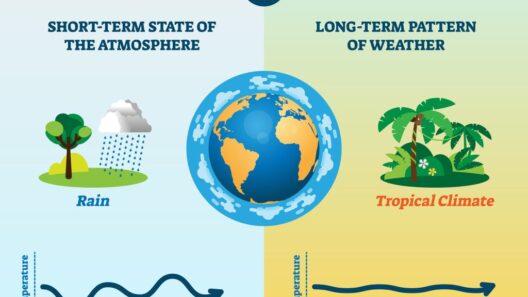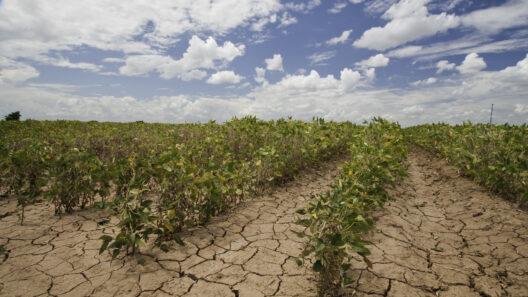
www.nytimes.com
fashion fast planet destroying associated wong maye credit press
In an increasingly consumer-driven world, the allure of fast fashion is undeniable. The concept is simple: affordable, stylish clothing is produced at breakneck speed to meet the insatiable desires of the modern shopper. However, this convenience comes at a substantial cost—one that is rendered invisible to many, yet is profoundly consequential for our planet. As we unravel the complexities of fast fashion, we uncover an urgent narrative that demands our attention: How our closet choices directly influence climate change and the planet’s future.
To comprehend the environmental ramifications of fast fashion, it is pivotal to first acknowledge its scale. The industry has morphed into a colossal behemoth, with production rates doubled, even tripled, within the past two decades. This exponential growth correlates with a troubling statistic: the fashion industry’s carbon footprint is now greater than that of the aviation and maritime industries combined. The insatiable demand for new garments necessitates vast quantities of resources—water, energy, and raw materials—that facilitate a cycle of overproduction and waste.
At the heart of this disaster lies the sourcing of materials. Traditional fabrics like cotton, while seemingly innocuous, consume copious amounts of water—approximately 2,700 liters are required to produce a single cotton shirt. This is an alarming statistic considering that many regions across the globe are grappling with severe water shortages. In contrast, synthetic fibers, which dominate the fast fashion landscape, are derived from fossil fuels, entrenching the industry in a web of carbon emissions. The extraction and processing of these materials necessitate energy-intensive operations, further exacerbating pollution and climate impact.
As the garments reach consumers, they frequently embody a quality that is subpar, leading to a culture of disposability. The trend of buying cheap and wearing briefly fosters an astonishing cycle of consumption. According to research, the average consumer now discards about 60% of their wardrobe each year. This phenomenon not only emphasizes a disregard for the lifespan of clothing but also amplifies textile waste. Landfills are often inundated with discarded clothing, which, when decomposing, releases greenhouse gases—methane, in particular—that are markedly more potent than carbon dioxide.
The environmental degradation resulting from fast fashion extends beyond mere waste. The dyeing and finishing processes used in fabric production imply the release of toxic chemicals into waterways, severely affecting aquatic ecosystems and threatening biodiversity. These pollutants, often unchecked, undermine the health of communities situated near production facilities, rendering fast fashion not only an ecological crisis but also a pressing social justice issue. Communities in developing nations bear the brunt of this industrial neglect, where exploitation is woven into the fabric of the industry.
Importantly, the global supply chain of fast fashion is fraught with inequities, where exploitation underpins its economic viability. Workers in garment factories often endure horrendous working conditions, long hours, and insufficient wages. This socioeconomic malaise is exacerbated by a lack of regulatory oversight, allowing brands to prioritize profit margins over humanitarian considerations. As consumers, a shift in perspective is required; one must recognize that the price of clothing reflects more than just the fabric—it symbolizes a complex interplay of labor, environmental impact, and ethical considerations.
So how can individuals effect meaningful change in this landscape? The first step is cultivating awareness. Mindful consumption is paramount; by making intentional decisions about what we purchase, we can disrupt the fast fashion cycle. Embracing sustainable brands that prioritize eco-friendly practices and ethical labor conditions has far-reaching implications. It advocates for a model that values quality over quantity, underscoring the importance of craftsmanship and longevity in our apparel choices.
Moreover, the practice of upcycling presents a creative avenue to combat waste. Transforming old garments into something new fosters a sense of individuality and lessens the burden of textile waste. A shift towards a more circular economy—where clothing is designed with its eventual reuse and recycling in mind—will generate significant strides towards sustainability.
Additionally, engaging in clothing swaps or purchasing second-hand items not only extends the life cycle of garments but also diminishes the demand for new production. Supporting local artisans and thrift stores can forge a connection within communities and enhance the appreciation of fashion as an art form, rather than just a consumable product. The perception of clothing needs reevaluation; it should be viewed as an investment rather than a fleeting purchase.
To compound these individual actions, systemic change is equally crucial. Advocacy for policies that regulate the fast fashion industry can catalyze large-scale transformations. By championing transparency within supply chains and demanding accountability from corporations, we can hold brands responsible for their environmental impact and labor practices. As consumers collectively voice concerns, there lies potential for legislative frameworks that prioritize ethical and sustainable fashion practices.
In conclusion, the ramifications of fast fashion extend far beyond the immediate gratification of a new outfit. Each purchase reflects our values, our consideration for the planet, and our respect for those who labor to produce clothing. The urgency of the climate crisis necessitates a shift in how we approach fashion, urging a profound change in consumer behavior. Recognizing the interconnectedness of our clothing choices with global ecological health is vital. It is time to reclaim personal agency and contribute to a sustainable, equitable future—one where our wardrobes echo the principles of environmental stewardship and ethical responsibility.




